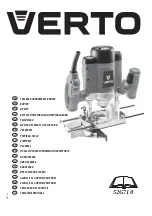
4-4
Catalyst 2960 Switch Hardware Installation Guide
OL-7075-09
Chapter 4 Troubleshooting
Diagnosing Problems
Port and Interface Settings
An obvious but sometimes overlooked cause of port connectivity failure is a disabled port. Verify that
the port or interface is not disabled or for some reason powered off. If a port or interface is manually
shut down on one or the other side of the link, the link does not come up until you re-enable the port.
Use the
show interfaces
privileged EXEC command to verify the port or interface error-disabled,
disabled, or shutdown status on both sides of the connection. If necessary, re-enable the port or the
interface.
Ping the End Device
Verify the end device connection by first pinging it from the directly connected switch, and then work
your way back port by port, interface by interface, trunk by trunk, until you find the source of the
connectivity issue. Make sure that each switch can identify the end device MAC address in its
Content-Addressable Memory (CAM) table.
Spanning Tree Loops
Spanning Tree Protocol (STP) loops can cause serious performance issues that might appear to be port
or interface problems. In this situation, the switch bandwidth is used repeatedly by the same frames,
crowding out legitimate traffic.
A unidirectional link can cause loops. This occurs when the traffic that the switch sends is received by
its neighbor, but the switch does not receive the traffic that is sent from the neighbor. A broken
fiber-optic cable, other cabling, or a port issue could cause this one-way communication.
You can enable the UniDirectional Link Detection (UDLD) protocol on the switch to help identify
difficult-to-find unidirectional link problems. UDLD supports a normal mode of operation (the default)
and an aggressive mode. In normal mode, UDLD detects unidirectional links because of incorrectly
connected interfaces on fiber-optic connections. In aggressive mode, UDLD also detects unidirectional
links caused by one-way traffic on fiber-optic and twisted-pair links and by incorrectly connected
interfaces on fiber-optic links. For information about enabling UDLD on the switch, see the
“Understanding UDLD” section in the software configuration guide.
Monitor Switch Performance
Review these sections when you troubleshoot switch performance problems:
•
Speed, Duplex, and Autonegotiation, page 4-4
•
Autonegotiation and NIC Cards, page 4-5
•
Cabling Distance, page 4-5
Speed, Duplex, and Autonegotiation
If the port statistics show a large number of alignment errors, frame check sequence (FCS), or
late-collisions errors, a speed or duplex mismatch might be the problem.
A common issue with speed and duplex occurs when the duplex settings are mismatched between two
switches, between a switch and a router, or between the switch and a workstation or server. This can
happen when you manually set the speed and duplex or because of autonegotiation issues between the
two devices.
















































